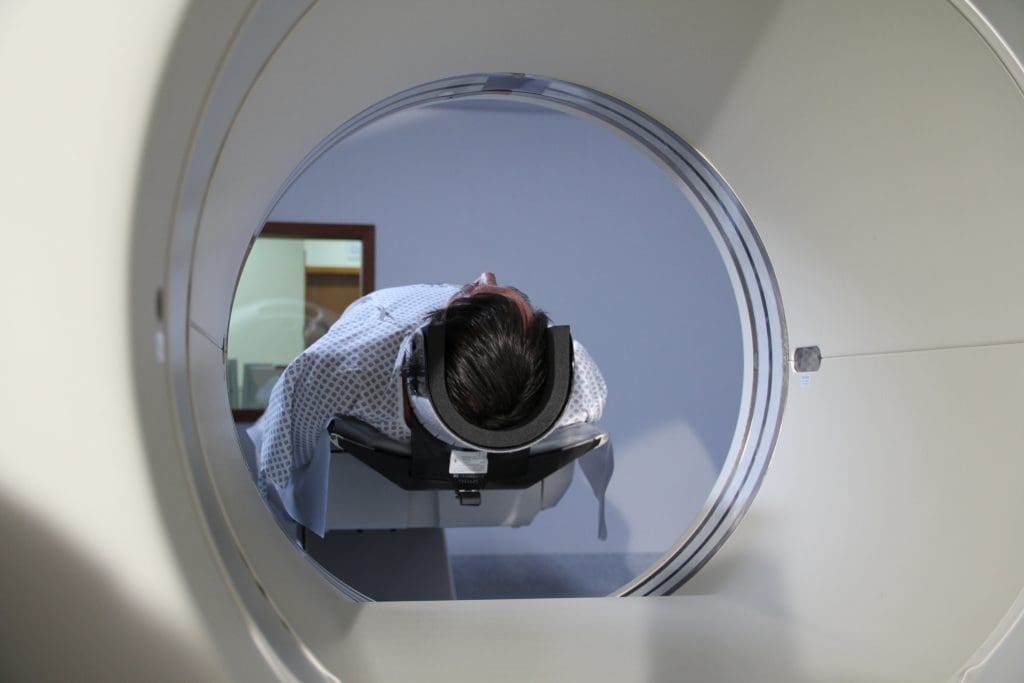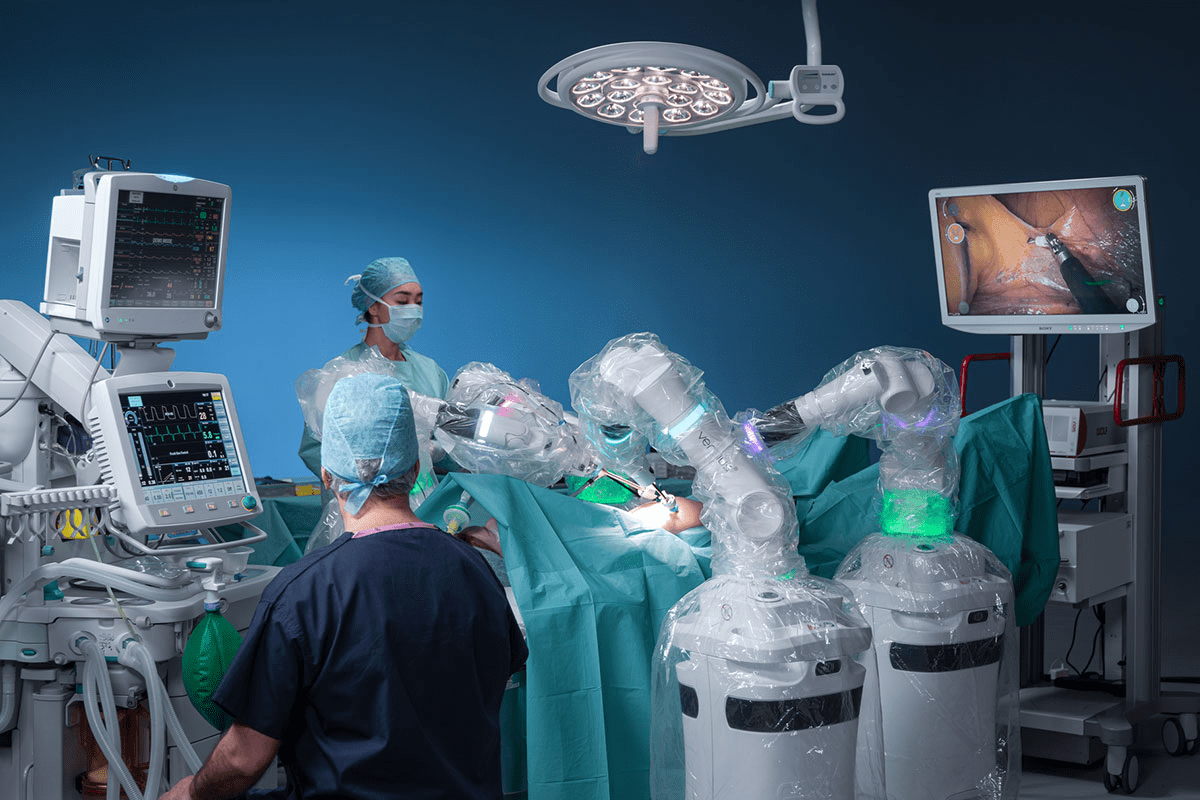Last Updated on November 27, 2025 by Bilal Hasdemir
Nearly 2 million people in the United States get PET scans each year. These scans help diagnose and treat various cancers. But, some people might feel sick after a PET scan due to bad reactions to the radioactive tracer used in these scans.
It’s important for patients to know about the possible side effects of PET scans. This article will cover the common and rare side effects. It will also offer tips on how to feel better after the scan.
Key Takeaways
- PET scans use a radioactive tracer to diagnose and treat medical conditions.
- Some individuals may experience side effects after a PET scan.
- Common side effects include allergic reactions to the tracer.
- Rare but serious side effects can occur, such as anaphylaxis.
- Understanding the risks can help patients prepare and minimize discomfort.
What is a PET Scan?

A PET scan, or Positron Emission Tomography scan, is a high-tech way to see how the body works. It helps doctors check on different body functions and find diseases, like cancer.
Definition and Purpose
A PET scan is a non-invasive test that uses a special tracer to see inside the body. The main purpose of a PET scan is to find and track diseases like cancer, brain problems, and heart issues. It shows where the body’s activity is not normal, helping doctors spot health problems early.
The definition of a PET scan shows that it is more than just a picture of the body. It gives detailed info on how the body’s parts work. This is why PET scans are key for finding and tracking cancer, showing how tumors work.
How PET Scans Differ from Other Imaging Tests
PET scans are different from CT scans or MRI because they show how the body works, not just what it looks like. PET scans focus on the body’s functions, unlike CT and MRI, which show the body’s structure. This makes PET scans great for seeing how cancer spreads, checking if treatments are working, and finding brain problems.
When we look at PET scans compared to other tests, we see their special benefits. For example, PET scans can find cancer before it changes the body’s structure. This makes them a strong tool for early diagnosis and planning treatment.
In short, PET scans are a key tool for doctors to understand the body’s activity. They help find and track diseases. Their unique ability to show how the body works makes them a vital part of today’s medicine.
How PET Scans Work
To understand PET scans, we need to know about radioactive tracers. These tracers, like fluorodeoxyglucose (FDG), help show how active the body’s cells are. This is key for medical imaging.
The Science Behind PET Imaging
PET imaging catches positrons from a radioactive tracer. This tracer goes to active areas, like growing cancer cells. The positrons then hit electrons, making gamma rays that the scanner picks up.
This method works because different body parts have different activity levels. PET scans use a tracer to find where this activity is high. This helps spot problems like cancer and see how treatments work.
Radioactive Tracers Explained
Radioactive tracers are special substances with a bit of radioactive material. In PET scans, they focus on certain body processes, like how cells use glucose. Fluorodeoxyglucose (FDG) is often used because it goes to areas that use a lot of glucose, like cancer cells.
- Types of Tracers: There are many tracers for PET scans, each for different body processes.
- Tracer Accumulation: They build up in active areas, helping find issues.
- Emission of Positrons: The tracer sends out positrons, which the scanner catches to make detailed images.
Knowing about radioactive tracers is key to understanding PET scan results. It shows how powerful this technology is for diagnosis.
The PET Scan Procedure: What to Expect
To get the most out of your PET scan, it’s key to know what happens before, during, and after. A PET scan is a tool doctors use to find health issues. Being ready can make the experience better.
Before the Scan
Getting ready is important before a PET scan. Patients should follow specific instructions from their doctor. This might include:
- Fast for 4-6 hours before the scan.
- Avoid hard exercise for a day or two before.
- Tell your doctor about any meds, allergies, or health issues.
- Get there early to do paperwork and get ready.
Wear comfy clothes and avoid metal jewelry or clothes.
During the Scan
During the scan, you’ll lie on a table that slides into a big scanner. It’s usually painless but might feel tight. The scan takes about 30 minutes to an hour, but getting ready can add to the time.
The scanner picks up signals from a special tracer, showing detailed body images. It’s important to stay very quiet during the scan for clear pictures.
Immediately After the Scan
After the scan, you can usually go back to normal unless your doctor says not to. Drink lots of water to get rid of the tracer. Some patients might feel tired or notice a metallic taste, but these effects usually fade quickly.
Following your doctor’s post-scan advice can help avoid side effects and get the best results from your PET scan.
Common PET Scan Side Effects
PET scans are usually safe, but some people might feel side effects. These can be mild or serious. It’s important to know about them before the scan and when to get help.
Mild and Expected Reactions
Most people feel a bit tired, have headaches, or feel sick after a PET scan. These feelings come from the radioactive tracer used.
Common Mild Side Effects:
- Fatigue or feeling tired
- Headache
- Nausea or feeling queasy
- Dizziness
These side effects are usually short-lived and go away soon after the scan.
Duration of Common Side Effects
How long side effects last can vary. Usually, mild effects from PET scans don’t last long, just a few hours. But sometimes, they can last a day or two.
| Side Effect | Typical Duration |
| Fatigue | A few hours to a day |
| Headache | A few hours |
| Nausea | A few hours to a day |
Drinking plenty of water and following your doctor’s advice can help manage these side effects.
Specific PET Scan Side Effects to Be Aware Of
Knowing the side effects of a PET scan helps patients prepare and recover. PET scans are important for diagnosis, but some side effects can affect daily life.
Digestive Issues Including Diarrhea
Some people may have digestive problems after a PET scan. Diarrhea is a common side effect, caused by the radioactive tracer.
Digestive issues can be due to the tracer used. Patients might also feel nauseous or vomit, making digestion harder.
| Digestive Issue | Possible Causes | Management Strategies |
| Diarrhea | Radioactive tracer | Stay hydrated, consider anti-diarrheal medication |
| Nausea/Vomiting | Reaction to tracer or contrast agent | Anti-nausea medication, dietary adjustments |
Fatigue and Weakness
Fatigue and weakness are common after a PET scan. The scan is long and requires lying down, leading to discomfort.
The tracer might also cause fatigue. Resting and staying hydrated can help the body recover.
Mood Changes and Depression
Mood changes, like depression and anxiety, can happen after a PET scan. Waiting for results or dealing with a diagnosis can affect emotions.
Talking to a healthcare provider about mood changes is important. They might suggest support or counseling to help.
Understanding these side effects helps patients prepare for the PET scan and recovery.
Radioactive Tracer Side Effects
PET scans use radioactive tracers to see inside the body. But, these tracers can cause problems for some patients. They are key to PET scan technology, helping doctors diagnose and track many conditions.
Types of Tracers Used in PET Scans
The main PET scan isotope is Fluorodeoxyglucose (FDG). It’s a glucose molecule with a radioactive tag. FDG goes to areas with lots of activity, like growing tumors, helping find them. Other tracers are used for heart or brain issues.
Even though safe, side effects of fluorodeoxyglucose (FDG) can happen. These might include soreness at the injection site, allergies, or other body-wide effects. It’s important to tell doctors about any allergies before a PET scan.
Potential Reactions to Radioactive Materials
Getting radioactive tracers can cause side effects. Some are due to the radiation itself. Common radioactive tracer side effects are tiredness, nausea, and headaches. Rarely, severe reactions like an allergic response can happen.
It’s key to know the risks and benefits of radiation PET scan procedures. Doctors will look at each patient’s risk and talk about any worries before the scan.
PET Scan Dye and Contrast Reactions
Contrast agents are used in PET scans to improve image quality. They help doctors diagnose health issues more accurately. But, it’s important to know about the possible reactions they can cause.
Understanding Contrast Agents
Contrast agents, or dyes, are used to highlight body areas in PET scans. They can be iodine-based or gadolinium-based. In PET scans, radioactive tracers are often used. These tracers gather in active areas, like tumors.
Types of Contrast Agents:
- Iodine-based contrast agents
- Gadolinium-based contrast agents
- Radioactive tracers
The right contrast agent depends on the PET scan’s needs and the patient’s history.
Allergic and Non-Allergic Reactions
Contrast agents are usually safe but can cause reactions in some. These reactions can be mild or severe. They can be allergic or non-allergic.
| Reaction Type | Symptoms | Severity |
| Allergic Reaction | Hives, itching, swelling, difficulty breathing | Mild to Severe |
| Non-Allergic Reaction | Nausea, vomiting, headache, dizziness | Mild to Moderate |
Severe allergic reactions are rare but need quick medical help. It’s key to tell doctors about any allergies or past reactions to these agents.
If you have symptoms after a PET scan, get medical help fast. Knowing about contrast agent reactions helps manage risks from PET scans.
Rare but Serious PET Scan Complications
PET scans are usually safe, but serious complications can happen. It’s important for patients to know about these risks. This way, they can get help quickly if needed.
Severe Allergic Reactions
Severe allergic reactions to the dye used in PET scans are rare but serious. Symptoms include trouble breathing, a fast heartbeat, and low blood pressure. In the worst cases, anaphylaxis can happen, which is very dangerous and needs quick medical help.
People with allergies are more likely to have a reaction to the dye. Telling your doctor about any allergies or past reactions is key to avoiding this risk.
Other Uncommon Adverse Effects
Other rare side effects of PET scans include heart problems, neurological symptoms, or other body reactions. How likely and severe these are can depend on your health and the PET scan details.
Some patients might have delayed reactions to the scan, showing up days later. It’s smart to watch your health after the scan and tell your doctor about any odd symptoms.
PET Scan Radiation Exposure and Safety
Understanding the radiation from PET scans is key to knowing their safety. PET scans use small amounts of radioactive tracers. They help diagnose and monitor medical conditions.
Radiation Levels in PET Scans
PET scans expose you to low levels of radiation. But, it’s not zero. The dose can be between 2 to 7 millisieverts (mSv). This depends on the tracer and the scan’s details.
Factors influencing radiation exposure include:
- The type and amount of radioactive tracer used
- The duration of the scan
- The patient’s body size and composition
Comparing PET Scan Radiation to Other Sources
To understand PET scan radiation better, compare it to other sources. The average yearly background radiation in the U.S. is 3 mSv. So, a PET scan’s dose is like a few years of background radiation.
Long-term Safety Considerations
The long-term safety of PET scans is being studied. While they offer immediate benefits, there’s a risk of long-term effects. This includes a possible increase in cancer risk.
It’s essential for healthcare providers to:
- Carefully weigh the benefits and risks for each patient
- Use the minimum necessary dose of radioactive tracer
- Monitor patients for any adverse effects
Post-PET Scan Precautions
After a PET scan, it’s key to take steps to lower radiation exposure for others. The tracer used in the scan will break down and leave your body over time. To speed up this process and lower exposure for those around you, there are actions you can take.
Hydration and Elimination of Radioactive Materials
Drinking lots of water is a great way to get rid of the tracer faster. Drink at least 8 to 10 glasses of water in the 24 hours after your scan. Also, drinking more fluids can help you pee more, which helps get rid of the tracer.
Interactions with Others After Your Scan
Even though PET scans are safe, it’s wise to keep a distance from others, like pregnant women and young kids. Stay away from others for a few hours after the scan. It’s also a good idea to sleep in a separate bed from your partner that night.
Resuming Normal Activities
You can usually go back to your normal routine soon after a PET scan. But, it’s smart to avoid hard activities for the rest of the day. If you’re unsure about certain activities, talk to your doctor for advice.
By taking these precautions, you can reduce radiation exposure for others and help your body heal. If you have questions or worries about your PET scan or what to do after, contact your healthcare team.
When to Seek Medical Help After a PET Scan
If you’ve had a PET scan, knowing the warning signs of serious reactions is key. Most people don’t face severe side effects. But, knowing the risks can keep you safe and healthy.
Warning Signs of Serious Reactions
Watch how your body reacts to the tracer and substances used in the scan. Look out for:
- Severe allergic reactions, like trouble breathing, fast heart rate, or swelling
- Increased heart rate or palpitations
- Dizziness or fainting
- Severe headache or confusion
- Abdominal pain or vomiting
If you notice any of these, get medical help right away.
Contacting Your Healthcare Provider
If you’re feeling unusual or worried after a PET scan, reach out to your healthcare provider. They can guide you and offer reassurance.
When you call, be ready to share about your symptoms. This includes:
| Symptom | Description | Duration |
| Headache | Mild, moderate, or severe | Time after PET scan |
| Dizziness | Mild, moderate, or severe | Time after PET scan |
| Nausea or vomiting | Presence or absence | Time after PET scan |
Being aware of warning signs and acting quickly can reduce risks from PET scans.
Conclusion
Knowing about PET scan side effects and safety is key for those getting this test. Being informed helps people take steps to avoid risks.
PET scan side effects can be mild or serious. Most are temporary, but it’s good to know about them. This includes understanding the risks of PET scans.
To stay safe after a PET scan, drink plenty of water. This helps get rid of the radioactive tracer. Knowing how to avoid problems can make a big difference.
PET scans are usually safe, but knowing the risks helps. Being informed can make the experience better. It lets patients make smart choices about their health.
FAQ
Are there any alternatives to PET scans?
Other imaging tests like CT scans, MRI scans, or ultrasound might be used instead. Your doctor will choose the best test for your needs.
How accurate are PET scans in diagnosing medical conditions?
PET scans are very accurate for diagnosing and monitoring many conditions, like cancer and neurological disorders. But, the test’s accuracy can depend on the tracer and scan quality.
What should I do if I experience symptoms after a PET scan?
If you have severe symptoms like pain, trouble breathing, or a severe allergic reaction, get help right away. For mild symptoms, call your doctor for advice.
Can a PET scan cause cancer or other long-term health problems?
PET scans use low levels of radiation. The benefits usually outweigh the risks. But, there’s a small chance of long-term effects, including cancer. Your doctor will discuss the risks and benefits with you.
How can I minimize radiation exposure after a PET scan?
Drink lots of water to help flush out the tracer. Also, follow your doctor’s post-scan precautions to reduce radiation exposure.
Can I interact with others after a PET scan?
While PET scans are safe, it’s wise to be cautious around others, like pregnant women and kids. Follow your doctor’s advice on what to do after the scan.
How long does the radioactive tracer stay in the body after a PET scan?
The tracer in PET scans has a short half-life. It quickly decays and leaves the body. Staying hydrated and following post-scan advice helps reduce radiation exposure.
Are there any serious complications associated with PET scans?
Yes, though rare, serious problems can happen. These include severe allergic reactions, kidney damage, or anaphylaxis. Always tell your doctor about any allergies or health issues before a PET scan.
What are the common side effects of a PET scan?
After a PET scan, you might feel tired, have a headache, or feel dizzy. Some people get upset stomachs or nausea. These effects usually go away on their own.
What is a PET scan, and how does it work?
A PET (Positron Emission Tomography) scan is a medical test. It uses a radioactive tracer to see inside the body. The tracer is injected, then the PET scanner picks up the radiation to create detailed images.






